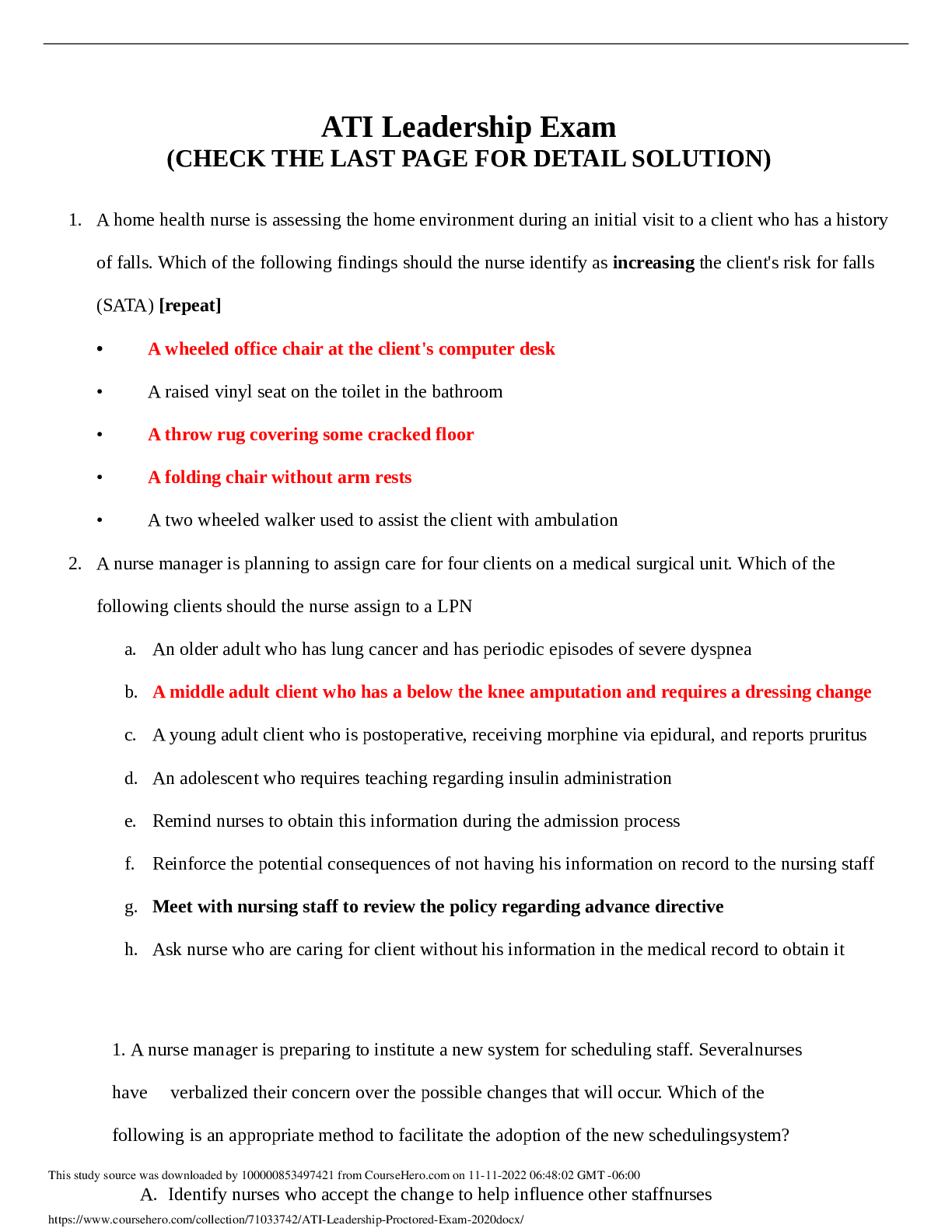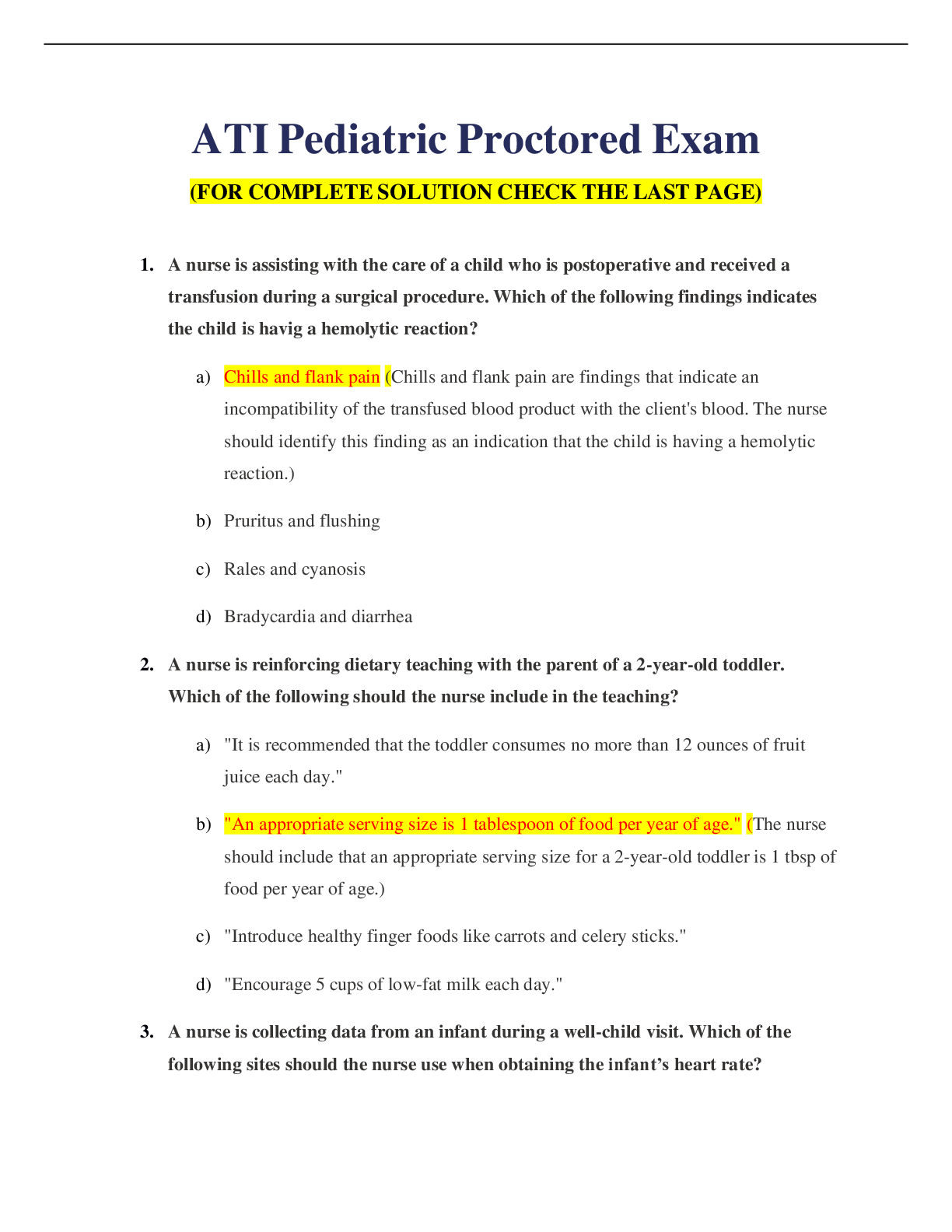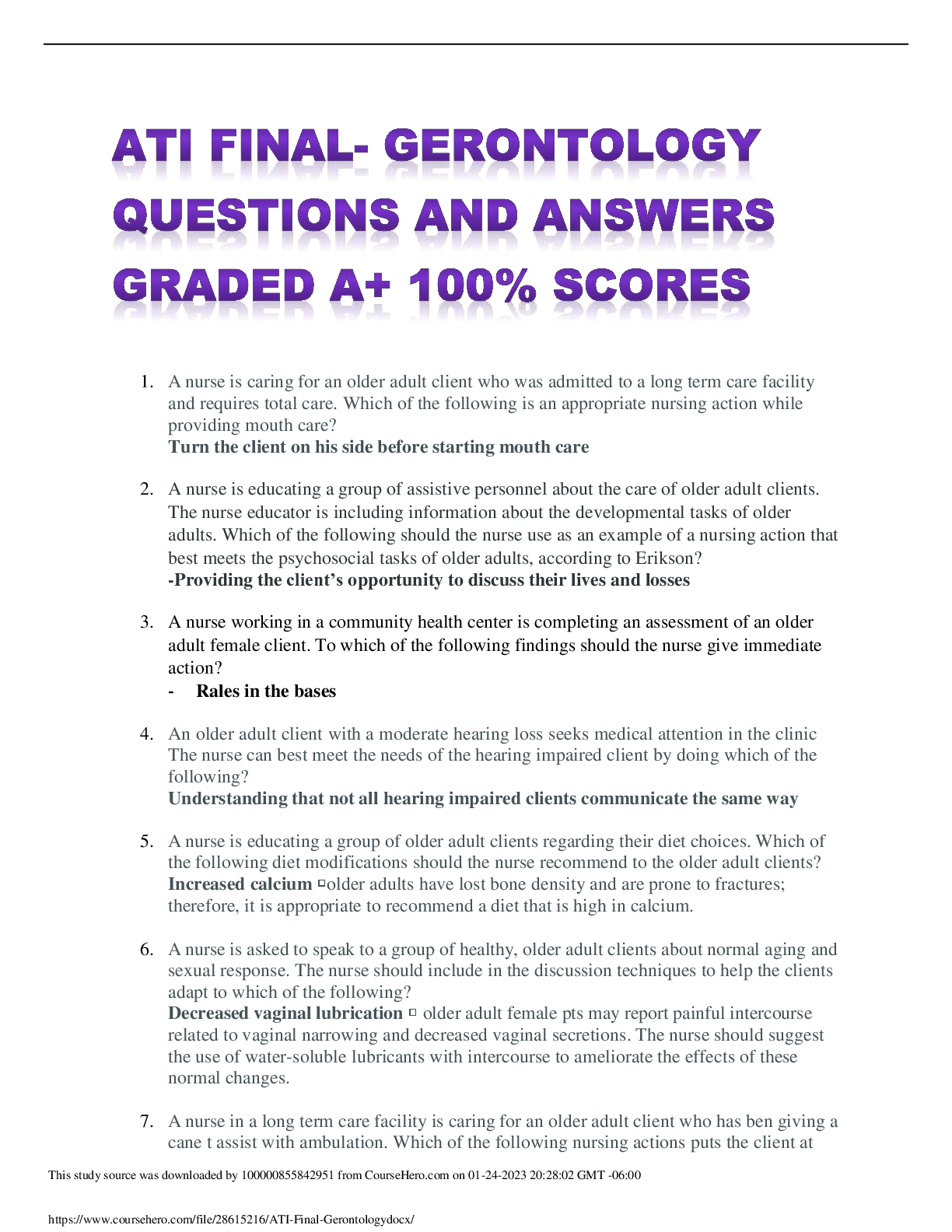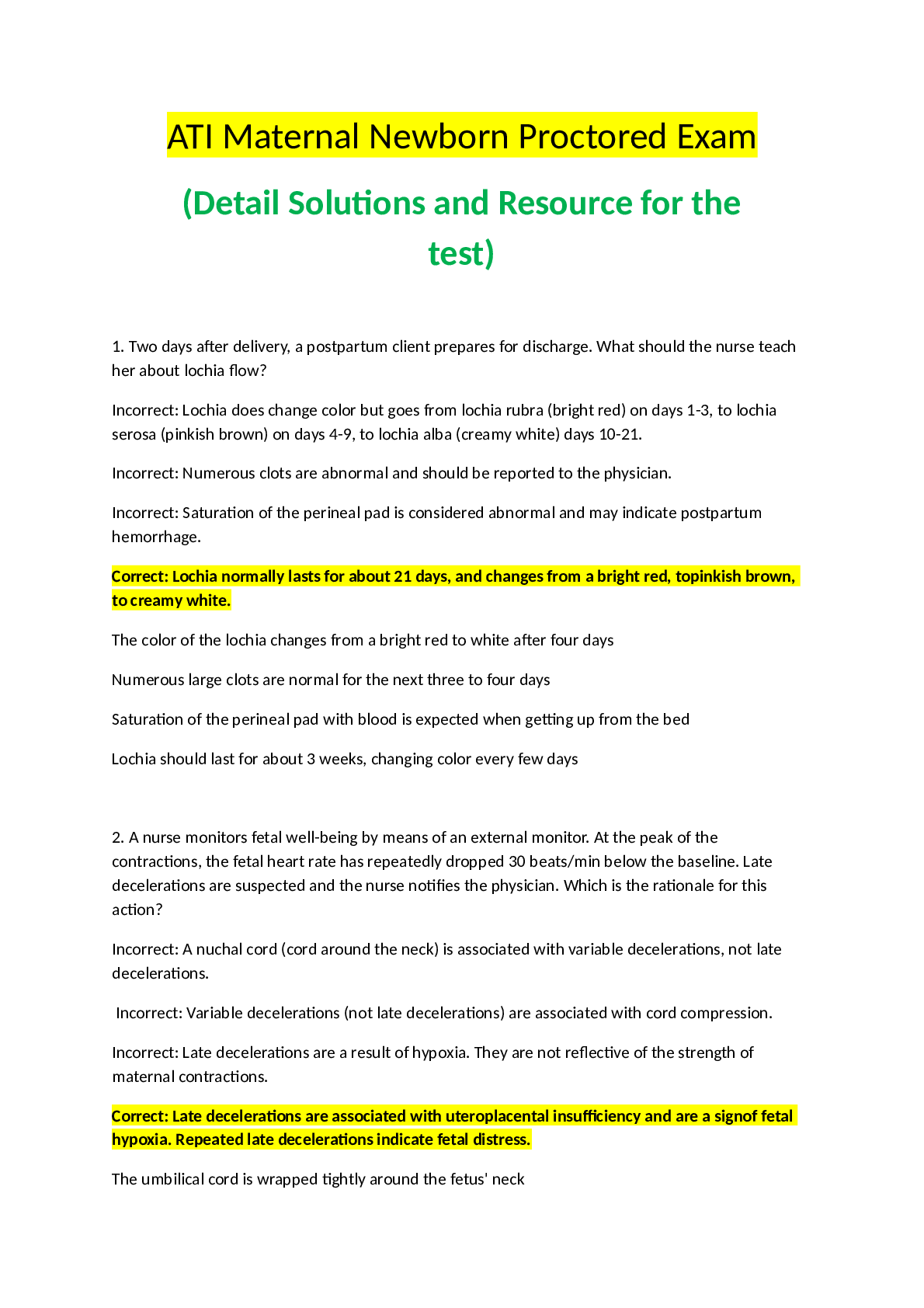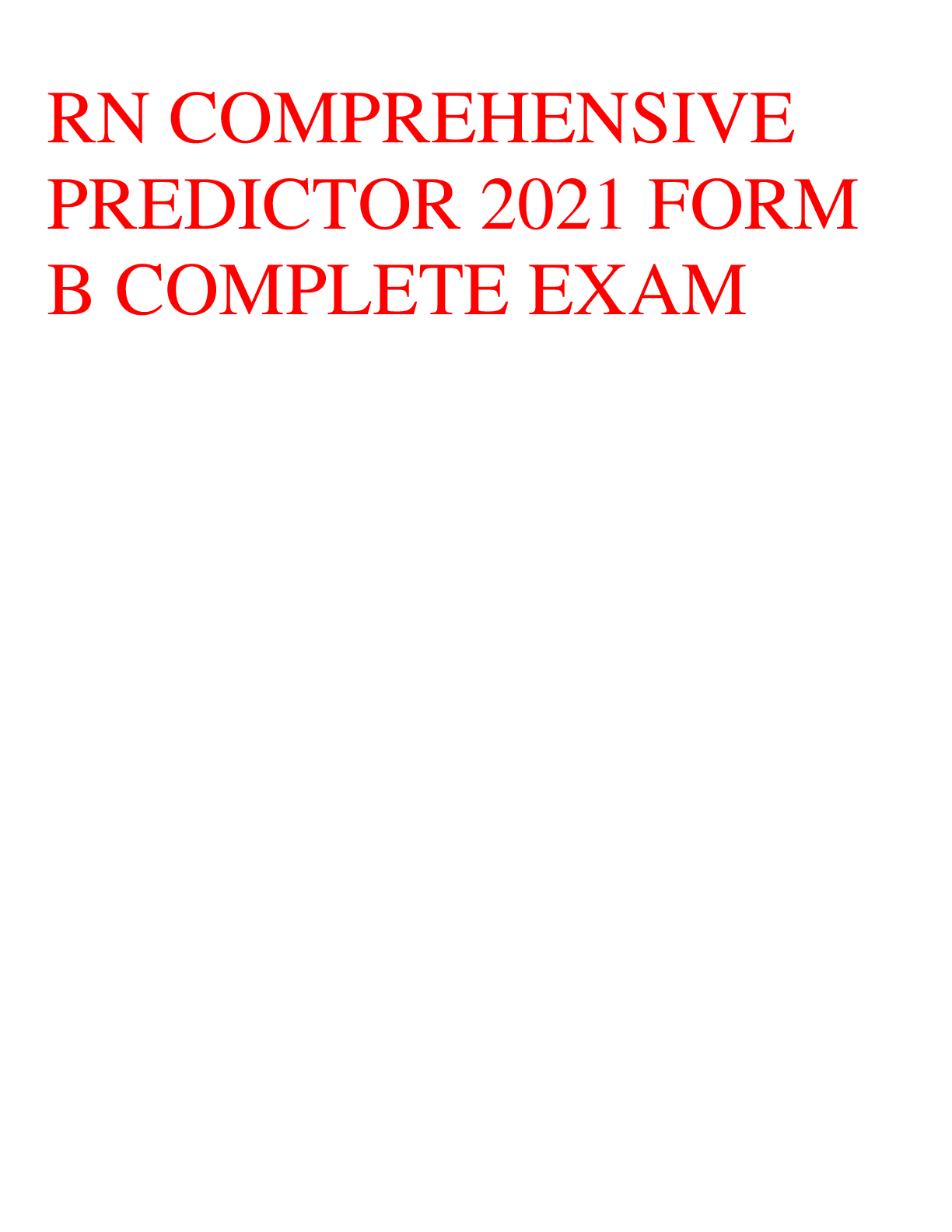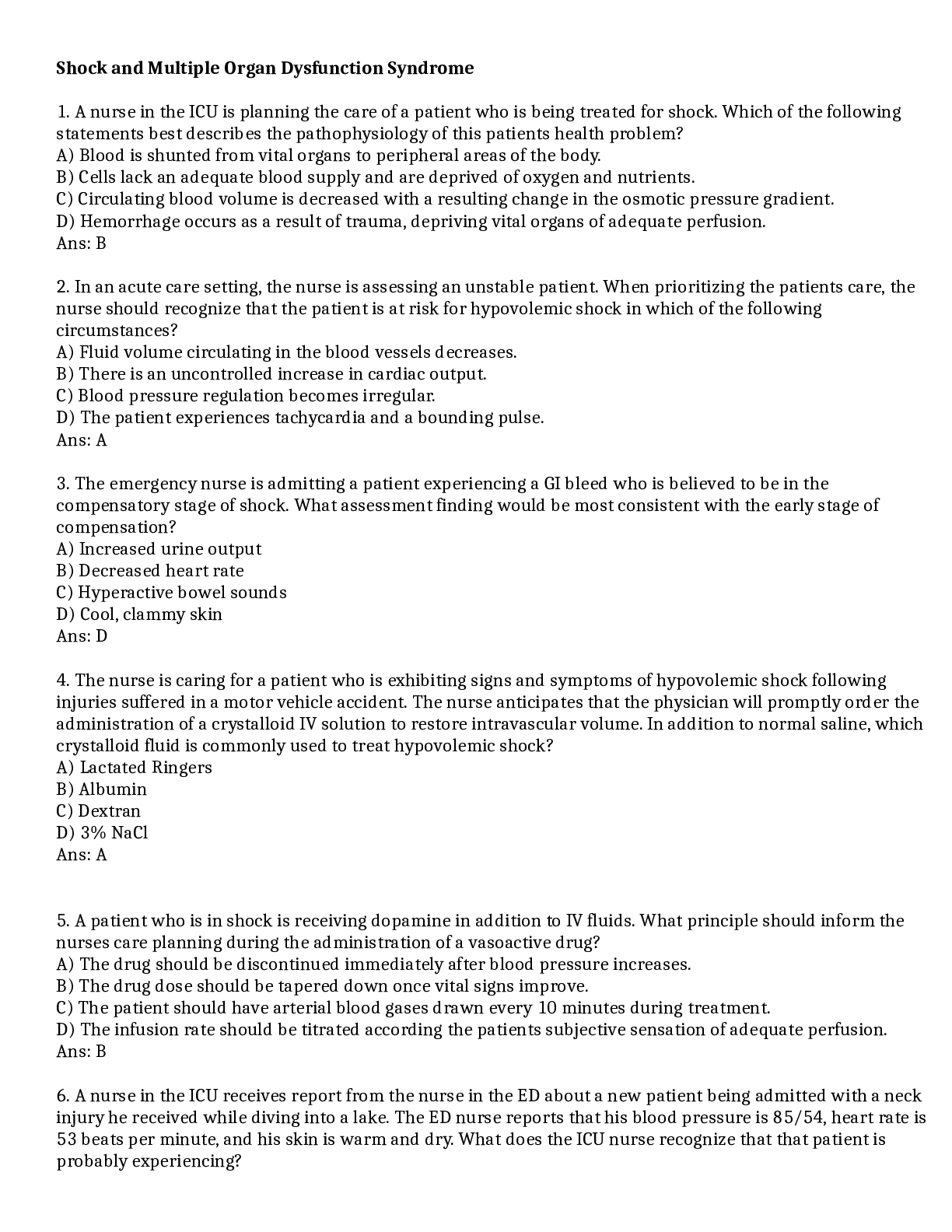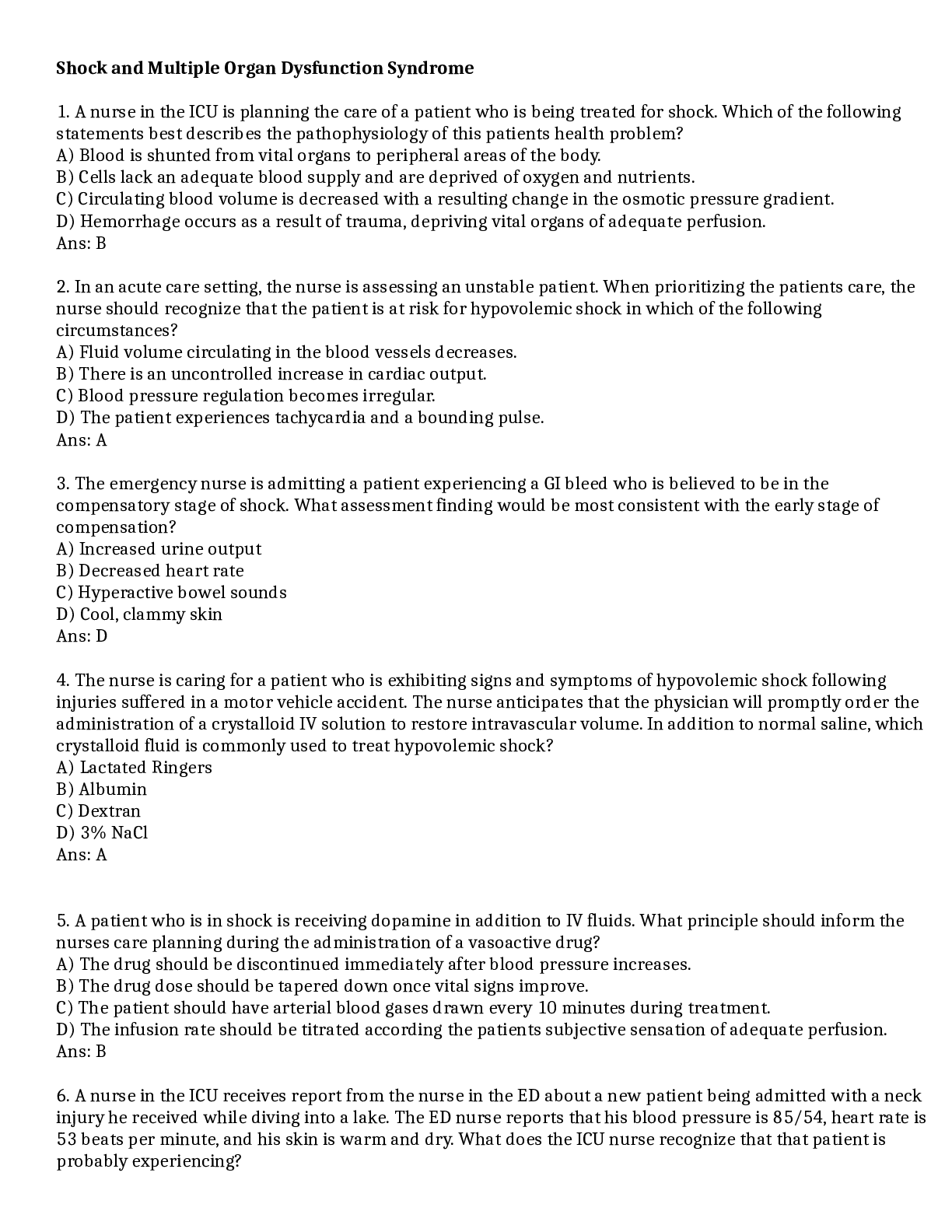*NURSING > EXAM PROCTORED > Chapter 12: Shock, Sepsis, and Multiple Organ Dysfunction Syndrome (All)
Chapter 12: Shock, Sepsis, and Multiple Organ Dysfunction Syndrome
Document Content and Description Below
Chapter 12: Shock, Sepsis, and Multiple Organ Dysfunction Syndrome Sole: Introduction to Critical Care Nursing, 7th Edition MULTIPLE CHOICE 1. The nurse is caring for a patient admitted with hypovo... lemic shock. The nurse palpates thready brachial pulses but is unable to auscultate a blood pressure. What is the best nursing action? a. Assess the blood pressure by Doppler. b. Estimate the systolic pressure as 60 mm Hg. c. Obtain an electronic blood pressure monitor. d. Record the blood pressure as “not assessable.” ANS: A Auscultated blood pressures in shock may be significantly inaccurate due to vasoconstriction. If blood pressure is not audible, the approximate value can be assessed by palpation or ultrasound. If brachial pulses are palpable, the approximate measure of systolic blood pressure is 80 mm Hg. This action has the potential to delay further assessment of a compromised patient in shock. Documenting a blood pressure as not assessable is inappropriate without further attempts using different modalities. DIF: Cognitive Level: Apply/Application REF: p. 260 OBJ: Develop an individualized plan of care that includes nursing diagnosis, expected outcomes, nursing interventions, and rationales. TOP: Nursing Process Step: Assessment MSC: NCLEX Client Needs Category: Physiological Integrity 2. The nurse has just completed an infusion of a 1000 mL bolus of 0.9% normal saline in a patient with severe sepsis. One hour later, which laboratory result requires immediate nursing action? a. Creatinine 1.0 mg/dL b. Lactate 6 mmol/L c. Potassium3.8 mEq/L d. Sodium140 mEq/L ANS: B Lactate level has been used as an indicator of decreased oxygen delivery to the cells, adequacy of resuscitation in shock, and as an outcome predictor. All other listed values are within normal limits and do not require additional follow-up. DIF: Cognitive Level: Remember/Knowledge REF: p. 263 Laboratory Alert box OBJ: Relate assessment findings to the classification and stage of shock. TOP: Nursing Process Step: Assessment MSC: NCLEX Client Needs Category: Physiological Integrity 3. The nurse has been administering 0.9% normal saline intravenous fluids in a patient with severe sepsis. To evaluate the effectiveness of fluid therapy, which physiological parameters would be most important for the nurse to assess? a. Breath sounds and capillary refill b. Blood pressure and oral temperature c. Oral temperature and capillary refill d. Right atrial pressure and urine output ANS: D Early goal-directed therapy includes administration of IV fluids to keep central venous pressure at 8 mm Hg or greater. Combined with urine output, fluid therapy effectiveness can be adequately assessed. Evaluation of breath sounds assists with determining fluid overload in a patient but does not evaluate the effectiveness of fluid therapy. Capillary refill provides a quick assessment of the patient’s overall cardiovascular status, but this assessment is not reliable in a patient who is hypothermic or has peripheral circulatory problems. Evaluation of oral temperature does not assess the effectiveness of fluid therapy in patients in shock. DIF: Cognitive Level: Evaluate/Evaluation REF: pp. 283-284 OBJ: Describe management strategies for each type of shock. TOP: Nursing Process Step: Assessment MSC: NCLEX Client Needs Category: Physiological Integrity 4. A patient is admitted to the critical care unit following coronary artery bypass surgery. Two hours postoperatively, the nurse assesses the following information: pulse is 120 beats/min; blood pressure is 70/50 mm Hg; pulmonary artery diastolic pressure is 2 mm Hg; cardiac output is 4 L/min; urine output is 250 mL/hr; chest drainage is 200 mL/hr. What is the best interpretation by the nurse? a. The assessed values are within normal limits. b. The patient is at risk for developing cardiogenic shock. c. The patient is at risk for developing fluid volume overload. d. The patient is at risk for developing hypovolemic shock. Vital signs and hemodynamic values assessed collectively include classic signs and symptoms of hypovolemia. Both urine output and chest drainage values are high, contributing to the hypovolemia. Assessed values are not within normal limits. A cardiac output of 4 L/min is not indicative of cardiogenic shock. The patient is at risk for hypovolemia, not volume overload, as evidenced by excessive hourly chest drainage and urine output. DIF: Cognitive Level: Analyze/Analysis REF: pp. 271-272 | Table 12-5 OBJ: Relate assessment findings to the classification and stage of shock. TOP: Nursing Process Step: Assessment MSC: NCLEX Client Needs Category: Physiological Integrity 5. A patient is admitted after collapsing at the end of a summer marathon. The patient is lethargic, with a heart rate of 110 beats/min, respiratory rate of 30 breaths/min, and a blood pressure of 78/46 mm Hg. The nurse anticipates administering which therapeutic intervention? a. Human albumin infusion b. Hypotonic saline solution c. Lactated Ringer’s bolus d. Packed red blood cells [Show More]
Last updated: 1 year ago
Preview 1 out of 15 pages

Buy this document to get the full access instantly
Instant Download Access after purchase
Add to cartInstant download
We Accept:

Reviews( 0 )
$8.00
Document information
Connected school, study & course
About the document
Uploaded On
Jun 03, 2021
Number of pages
15
Written in
Additional information
This document has been written for:
Uploaded
Jun 03, 2021
Downloads
0
Views
77


.png)


